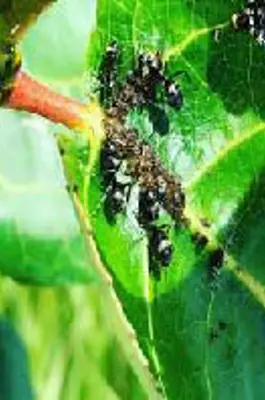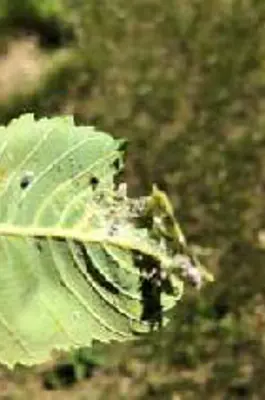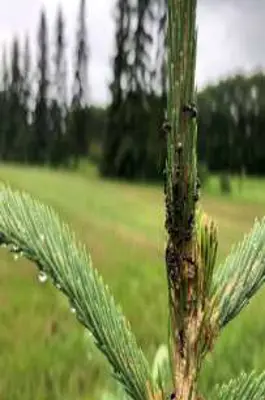Aphids: Pest Identification and Management
Aphids are among the most frequently and widely encountered insects on trees, shrubs, and ornamental garden plants. These small, sap-sucking insects can appear in very high numbers for extended periods of time causing damage to a wide range of trees, impacting their health, growth, and overall productivity.
Aphids are prey for numerous beneficial insects, such as ladybugs, lacewings, and parasitic wasps. These natural enemies help regulate aphid populations.
Pest ID and Symptoms
Aphids belong to the superfamily Aphidoidea, encompassing thousands of species. The tiny insects have an oval-shaped body, typically measuring 1-10 mm in length, exhibit a range of colours, including green, black, brown, and yellow, with a few species even appearing bright red in colour. Some aphids conceal their bodies by coating themselves with waxy threads, earning them the name 'woolly aphids'.
Aphids reproduce both sexually and asexually. The vast majority of all aphids, regardless of their form, are female. Males, when they do occur, are usually only present in late summer and early autumn, during the last outdoor generation. During favourable conditions, particularly in spring and summer, aphids reproduce parthenogenetically, where females give birth to live young without mating. This allows for rapid population growth. In autumn, as conditions deteriorate, many aphid species switch to sexual reproduction, producing eggs that can survive over winter and hatch in spring.
Aphids exhibit varying degrees of host specificity. Some are generalists, feeding on a wide range of plants, while others are specialists, targeting specific tree species. They are inefficient feeders and some aphids will produce excessive amounts of a sticky substance called honeydew. Ants farm aphids for their honeydew, offering protection from predators in return. This mutualism can complicate aphid management, as ants can aggressively defend their aphid partners.
Honeydew, which can be quite annoying when it accumulates on sidewalks, cars, and other surfaces, attracts insects like ants, bees, flies, and wasps, whose presence may be the first indication of an aphid infestation.
Damage
Aphids primarily feed on plant sap by piercing tender plant tissues and extracting large quantities of sap using their specialized mouthparts. They can be found feeding on various parts of the host plant, including foliage, buds, flowers, fruit, twigs, and roots, often in groups. Their feeding can result in galls, curled leaves, swollen branches, and discoloured or wilted leaves. Typically, aphids do not cause lasting damage to forest, shade, or ornamental trees. Aphid feeding behavior can lead to several detrimental effects on trees, such as:
- Nutrient Depletion: Aphids deprive trees of essential nutrients by sucking sap, leading to weakened and stunted growth.
- Leaf Curling and Distortion: The toxic saliva of aphids can cause leaves to curl and distort, reducing the tree's ability to photosynthesize.
- Sooty Mold Growth: Aphids excrete honeydew, a sticky, sugary substance that serves as a substrate for sooty mold fungi. This mold can cover leaves and branches, further hindering photosynthesis and aesthetic appeal
- Transmission of Plant Viruses: Aphids are hosts for various plant viruses, worsening the damage and making trees more susceptible to disease.
- Secondary Infections: The wounds created by aphid feeding can serve as entry points for other pathogens, leading to secondary infections.
Management and Control
Effective aphid management on trees involves an integrated approach, combining cultural, biological, and chemical control methods, such as:
- Regular inspections help detect aphid outbreaks early and keep trees healthy.
- Cold and heavy rain conditions are key factors in reducing aphids populations.
- Natural enemies including beneficial insects like ladybugs, lacewings, and birds significantly affect populations
- Using high pressure water to simple wash them off is also effective.
- Using a variety of insecticides, soaps, and dormant oils to control the population. These products can be effective against aphids by suffocating them or disrupting their cell membranes. They are often safer for beneficial insects compared to synthetic insecticides.
- Products such as imidacloprid or pyrethroids can target aphids while being less harmful to beneficial insects. Check for beneficial insect populations prior to use.
As aphids reproduce quickly and rapidly, whatever control you use, you may consider repeating this after a week to control high aphids populations.
Contact Us
Saddle Hills
Junction of Hwy 49 & Secondary Hwy 725
RR1, Spirit River AB
T0H 3G0
T. 780-864-3760
Fax 780-864-3904
Toll-free 1-888-864-3760
frontdesk@saddlehills.ab.ca
Sign up to our Newsletter
Stay up to date on the Saddle Hills activities, events, programs and operations by subscribing to our eNewsletters.



